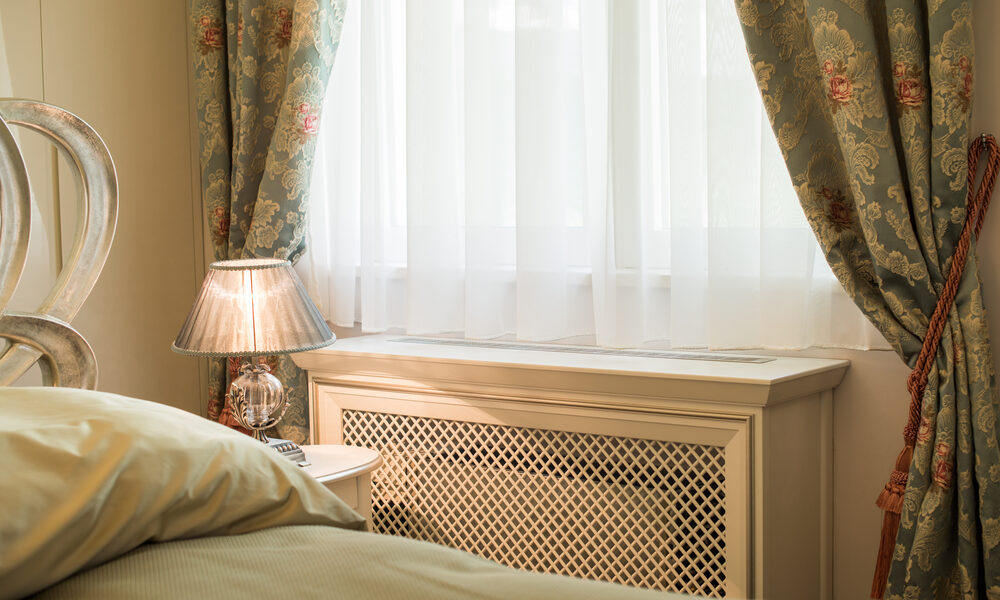Radiator covers are popular for their ability to conceal unsightly radiators and add a touch of style to a room. However, many homeowners wonder ‘do radiator covers block heat?’ and whether they reduce the efficiency of their heating systems.
While most radiator covers don’t block heat, there are some instances where radiator covers can reduce the efficiency of radiators. It’s important to find a radiator cover that is well ventilated and has a design that lets heat escape and circulate properly.
In this article, we’ll explore how radiator covers impact heat distribution and whether they are a good choice for maintaining a warm and comfortable home.
Are Radiator Covers a Good Idea?
Radiator covers can be a good choice in certain situations, but whether they are advisable depends on your specific needs and circumstances. Radiator covers can make an aesthetic improvement to your room, as well as provide extra shelf space if they have a flat top. They can also prevent young children and pets from getting accidental burns or catching themselves on sharp corners and edges.
There are some drawbacks to radiator covers that you should also consider. Radiator covers can be expensive, especially if you order custom-made covers with specific materials. Radiator covers also take up more room than radiators alone and can appear bulky. This can cause a problem in small rooms or walkways where the radiator cover sticks out.
Most radiator covers are designed for easy installation and can be assembled and installed by homeowners with basic DIY skills. However, ensure that the cover fits properly and does not obstruct the radiator’s valves or vents.
Radiator covers can make it slightly more challenging to access the radiator for maintenance, such as flushing the radiator and bleeding it. However, many covers are designed to be easily removed or have accessible openings for routine tasks. It’s essential to regularly maintain and check your radiator whether you have a cover or not. Regular maintenance can improve the lifespan of your radiator and ensures your house is being heated as efficiently as possible.
It’s important to choose a design that allows for proper heat distribution and to consider any potential impact on heating efficiency. If heat efficiency is a primary concern, you may want to ensure that the cover is well-ventilated and doesn’t significantly block the radiator’s heat output. You can temporarily remove the radiator cover to see if you notice a temperature difference. If you do, it could be that you need to replace the cover with one that has a better design and allows for better heat distribution.
Do Radiator Covers Stop Heat Getting into The Room?
An important question to consider is ‘do radiator covers prevent heat from circulating properly’. The answer is yes, in some cases. Poorly designed radiator covers can trap heat in them and prevent it from circulating the room. It’s essential that your radiator covers have slots and gaps in them that allows heat to escape properly. It’s important that these gaps aren’t covered while the radiator is on, otherwise the heat will become trapped.
A well-designed radiator cover can actually be more efficient at heat distribution than a radiator alone. The covers can help spread warmth more evenly across the room rather than allowing the heat to rise directly to the ceiling. This means that the radiator won’t have to work as hard to reach the desired temperature, saving both time and money on your energy bills.
When radiator covers are properly designed with adequate ventilation, the impact on room temperature is usually minimal. The heat can still circulate effectively, keeping the room warm.
What Are the Benefits of Radiator Covers?
Radiator covers improve the look of a room by concealing old or bulky radiators. They come in a range of styles, colours and materials to compliment the décor of any room. You can find a range of radiator accessories and covers here at Stelrad.
Aside from their aesthetic value, radiator covers provide a barrier to the radiator, which helps prevent people (especially children) and pets from getting burnt.
Radiator covers can cover sharp edges and protruding parts of the radiator that could potentially cause injury. Another great benefit of radiator covers is that they can protect nearby walls and furniture from direct heat exposure, preventing potential damage or discoloration over time.
Many radiator covers feature a flat top surface, which can be used for displaying items like photos, books, or plants, adding functionality to the room. However, be careful when putting heat-sensitive items on the radiator cover as they could get heat damage.
Properly designed radiator covers can also help distribute heat more evenly throughout the room. They direct warm air outwards instead of allowing it to rise directly to the ceiling. Radiator covers are an effect way conceal unsightly pipes, valves, and other radiator components, helping give the room a cleaner, more organized appearance.
What materials are radiator covers made from?
Radiator covers are typically made from materials such as wood, MDF (medium-density fibreboard), metal, and sometimes plastic. Each material offers different aesthetic and functional benefits. Wooden radiator covers can be painted to match the style of your room. Wood is a popular material for radiator covers because it doesn’t get as warm as other materials (such as metal) and is therefore safer around children. Metal is better at conducting heat and ensures no heat is lost, but it can get very hot.

